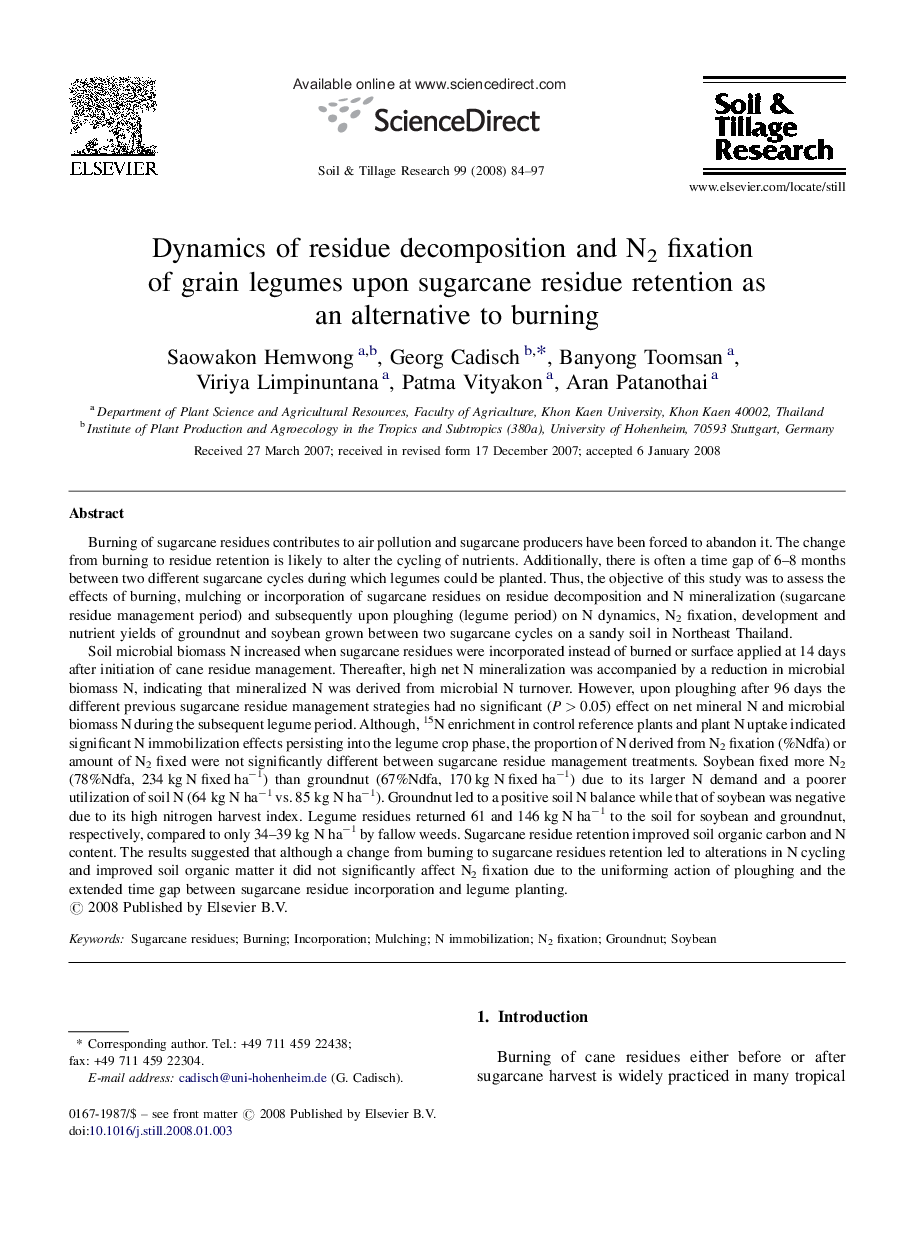| کد مقاله | کد نشریه | سال انتشار | مقاله انگلیسی | نسخه تمام متن |
|---|---|---|---|---|
| 306601 | 513104 | 2008 | 14 صفحه PDF | دانلود رایگان |

Burning of sugarcane residues contributes to air pollution and sugarcane producers have been forced to abandon it. The change from burning to residue retention is likely to alter the cycling of nutrients. Additionally, there is often a time gap of 6–8 months between two different sugarcane cycles during which legumes could be planted. Thus, the objective of this study was to assess the effects of burning, mulching or incorporation of sugarcane residues on residue decomposition and N mineralization (sugarcane residue management period) and subsequently upon ploughing (legume period) on N dynamics, N2 fixation, development and nutrient yields of groundnut and soybean grown between two sugarcane cycles on a sandy soil in Northeast Thailand.Soil microbial biomass N increased when sugarcane residues were incorporated instead of burned or surface applied at 14 days after initiation of cane residue management. Thereafter, high net N mineralization was accompanied by a reduction in microbial biomass N, indicating that mineralized N was derived from microbial N turnover. However, upon ploughing after 96 days the different previous sugarcane residue management strategies had no significant (P > 0.05) effect on net mineral N and microbial biomass N during the subsequent legume period. Although, 15N enrichment in control reference plants and plant N uptake indicated significant N immobilization effects persisting into the legume crop phase, the proportion of N derived from N2 fixation (%Ndfa) or amount of N2 fixed were not significantly different between sugarcane residue management treatments. Soybean fixed more N2 (78%Ndfa, 234 kg N fixed ha−1) than groundnut (67%Ndfa, 170 kg N fixed ha−1) due to its larger N demand and a poorer utilization of soil N (64 kg N ha−1 vs. 85 kg N ha−1). Groundnut led to a positive soil N balance while that of soybean was negative due to its high nitrogen harvest index. Legume residues returned 61 and 146 kg N ha−1 to the soil for soybean and groundnut, respectively, compared to only 34–39 kg N ha−1 by fallow weeds. Sugarcane residue retention improved soil organic carbon and N content. The results suggested that although a change from burning to sugarcane residues retention led to alterations in N cycling and improved soil organic matter it did not significantly affect N2 fixation due to the uniforming action of ploughing and the extended time gap between sugarcane residue incorporation and legume planting.
Journal: Soil and Tillage Research - Volume 99, Issue 1, April 2008, Pages 84–97